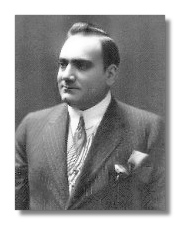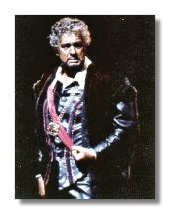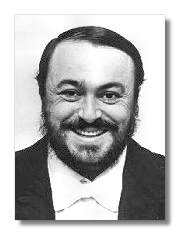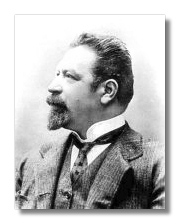
The Internet's Premier Classical Music Source
Related Links
-
Find CDs & Downloads
Amazon - UK - Germany - Canada - France - Japan
ArkivMusic - CD Universe
Find DVDs & Blu-ray
Amazon - UK - Germany - Canada - France - Japan
ArkivMusic-Video Universe
Find Scores & Sheet Music
Sheet Music Plus -
Search Amazon
Recommended Links
Site News
Giuseppe Verdi
Otello

Famous Interpretors
At first thoughts, this section was going to be about the different Tenors who have made the role of Otello their own. The basis for decisions in a role of this nature must be their live stage performances. One can look at the various studio recordings, but these can be misleading in many respects. Even taped versions of performances can be a mix of the best moments of various evenings. Reviews are useful, however perspectives of the same event may vary immensely. Therefore this page will examine the different Otellos and their style.
- Vladimir Atlantov
- Enrico Caruso
- Plácido Domingo
- Martinelli
- James McCracken
- Mario Del Monaco
- Luciano Pavarotti
- Francesco Tamagno
- Jon Vickers
- Ramon Vinay
Enrico Caruso
(1873 - 1921)

At the time of his death, Enrico Caruso had been preparing for the role of Otello. Fortunately, he recorded two selections from the opera: Ora e per sempre addio and Sì, pel ciel marmoreo, giuro! Although the recordings are of major selections, one comes away with the idea that Caruso would have been an Otello to reckon with. His final phrase in the former, "Della gloria d'Otello è questo il fin" is sung with just a hint of the heartbreak in his soul. Caruso even started the aria at a p level instead of the written pp. In the later duet, his tenor rings forth. They begin at Iago's "in cieco le targo." Caruso phrases the "Un sogno che rivela un fatto." with definite finality. In fact his phrasing in both the aria and duet suggests a polished performance, if he would have lived long enough. The last notes, the F sharp tied to the A natural, is neatly sung instead of sliding into it as the Tenors of today sometimes do.
Plàcido Domingo
(b. 1941)
Plàcido Domingo first performed Otello on September 28, 1975, in Hamburg Germany. The Conductor was James Levine. Since this date, Domingo has performed the role over 200 times. Unlike some of his other roles - Faust in Mefistofele, Ramerrez in Fanciulla or even Radamès in Aïda - every performance of Otello is different. His shading changes and sometimes even his phrasing. The two constants however are the level of his intensity and his dedication to the music.

Over the years, Domingo's tone has become more burnished and baritonal in depth. The ringing of his high notes is still thrilling as are the middle and lower registers. Part of Domingo's reputation as a great Otello has been built by his numerous video and audio performances. He has been televised twice from the Met, Covent Garden and La Scala. He has recorded the role twice in the studio. Once with James Levine (RCA) and the other with Myung-Whun Chung (DG). The former recording was made in 1977 just two years after his Otello debut. Already, Domingo was showing the beginnings of a promising Otello. The Sì pel ciel was filled with absolute rage and sounded as if Domingo still had more voice in reserve. His Dio mi potevi stands as a lesson in phrasing and breath-control. He has always treated the Third Act interview with Desdemona with special attention paid to the markings of the music.
The 1995 season at the Met opened with Otello and Domingo. The performance was taped and broadcast two weeks before his live appearance in the Matinee performance from the Met on Radio. The production was the same as was the conductor (Levine) and two-thirds of the cast. Domingo's vocal approach was different. One area in particular was Otello's curse of Desdemona in Act III. The Mattinee's tone was delivered to the point of extreme agitation. It was one of the most frightening renditions to date. When Domingo began delving into the heavier Wagner roles, the critics said it would destroy his voice. It has been over ten years since his first Lohengrin and he has added Seigmund (Walküre), Tannhäuser, Parsifal and next year Tristan (Tristan und Isolde) . If anything, through the stamina these roles demand, they have definetly added to the vocal palette of the greatest Otello ever.
Luciano Pavarotti
(b. 1935)

In 1991, Luciano Pavarotti gave a series of concert performances essaying the role. The concerts were given in Chicago and in New York at Carnegie Hall. They were recorded by London Records and released on a two-disc set. The supporting cast consisted of: Kiri Te Kanawa (Desdemona), Leo Nucci (Iago) and Sir Georg Solti conducting the Chicago Symphony Orchestra. In 1993 at the celebration of his 25th anniversary with the Met, he performed on stage the First Act. This is the only time he has performed the role on stage either in part or whole.
At first, one must acclimate oneself to Pavarotti singing a heavier role than that of Nemorino or Edgardo. This was the second heavier role Pavarotti had tried before going into the heavier repertoire. Radamès was the first and Don Carlo, Don Alvaro and Chénier were to follow. Pavarotti makes a credible Otello once one gets past that initial roadblock. In the Third Act duet with Desdemona, his voice becomes dark and threatening without over-indulging. The development of his Otello is very convincing although at times a little more emotion could be injected into the part. Pavarotti's diction and phrasing aide his portrayal although at times he lacks the necessary spontaneity. A brief comment on the engineering of the recording. The Orchestra, chorus and soloists are captured vividly, although to Nucci's disadvantage. The recording at times seems to phase in and out at times and in Dio mi potevi at the climax, Là?! Cielo! Pavarotti sounds as if he is singing a duet with himself.
Francesco Tamagno
(1850 - 1905)

Francesco Tamagno premiered the role of Otello at La Scala on February 5, 1887. Tamagno was appreciated for his phrasing and the sweetness of his "mezza-voce" even if the middle of the range was more ordinary and his acting appeared clumsy. The son of an innkeeper, his education was limited which did not help his acting and interpretation. When planning the production of Otello, Verdi objected strongly to Tamagno: The critics claimed that he had a poor "legato" and tended to go off pitch when singing "mezza-voce". Verdi also judged his musical background to be insufficient and his acting as poor. (1) During his last two years, Tamagno made several recordings with piano accompaniment. The recording quality is poor and the singer was at the stage of retirement. However the specific characteristics of his voice are recognizable. The middle is light but the voice seems effortless in reaching the high notes. The diction is clear, giving an impressive declamation in Otello's Esultate and Ora e per sempre addio. The pitch flaws, partly due to the recording technique, are still acceptable. The highs are even too effortless, because with the somewhat generic phrasing it results in an overall coolness. A comparison with the Otello recordings that Enrico Caruso made some years later shows better diction and more impressive high notes by Tamagno. Caruso sounds more convincing, however, because of his superior interpretive skills and the richness of the voice. We should not forget however, that Caruso was at his peak while Tamagno was retiring! (2)
Notable Desdemonas
- Renée Fleming
- Mirella Freni
- Aprile Millo
- Romilda Pantaleone
- Katia Ricciarelli
- Leonie Rysanek
- Renata Tebaldi
- Kiri Te Kanawa
- Renato Scotto
Notable Iagos
- Renato Bruson
- Tito Gobbi
- Sergei Leiferkus
- Victor Maurel
- James Morris
- Sherril Milnes
Footnotes
- Verdi did not modify his opinion, despite Tamagno's success. Several years later he wrote that he was impressive singing Esultate and Addio sante memorie, but that the lesser known tenor Giovanni Battista De Negri would have been a better overall choice.
- Source: Francesco Tamagno page written by Giovanni Christen.
Copyright © 1996, Stephen L. Parker.













